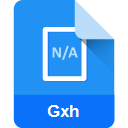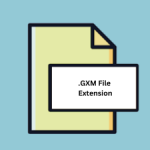.PRT File Extension

What is an PRT file?
The .PRT file extension is predominantly associated with “Part” files used in the realm of 3D object creation and computer-aided design (CAD).
These files are integral to engineers, architects, and designers as they encapsulate detailed information about individual components or parts of a larger assembly or design.
A .PRT file typically contains 3D models, including specifications about the geometry, surface texture, and materials of the object it represents.
The versatility of .PRT files makes them a staple in a multitude of industries, ranging from automotive and aerospace to consumer goods and electronics.
More Information.
The history of .PRT files is intertwined with the advancements in CAD technology. Initially, .PRT files served the primary purpose of storing geometric data and design attributes of individual components.
The aim was to create a digital environment where designers could develop, modify, and optimize parts before going into production. Over time, the scope of these files expanded, encapsulating more complex attributes such as assembly relationships, metadata, and even simulation data.
This evolution transformed .PRT files into comprehensive repositories of design intelligence, catering to the multifaceted needs of modern engineering and design processes.
Origin Of This File.
The origin of the .PRT file extension is deeply rooted in the evolution of CAD software. As the demand for precise and efficient design tools grew, software developers introduced .PRT files to store intricate design details in a robust and reusable format.
Companies like Siemens PLM Software with NX (formerly Unigraphics), and PTC with their Creo Parametric (formerly Pro/ENGINEER) are among the pioneers in utilizing the .PRT extension for their CAD solutions.
The introduction of .PRT files marked a significant transition from traditional, manual design methods to sophisticated, digital modeling techniques.
File Structure Technical Specification.
The structure of a .PRT file is highly sophisticated, designed to accurately represent 3D objects in a digital format. These files are typically binary, meaning they store information in a format not readily readable by humans but efficiently interpretable by software.
A .PRT file consists of various sections, including header information, metadata, geometric data, feature history, and sometimes, product manufacturing information. The geometric data includes vertices, edges, surfaces, and other elements that define the shape of the part.
The feature history allows users to revisit and revise the design steps, providing a robust framework for parametric modeling.
How to Convert the File?
Converting .PRT files to other formats can be essential for compatibility with different software or specific purposes like 3D printing or analysis. Here’s how to approach the conversion process:
Use Native CAD Software:
- In Software Conversion: The most straightforward method is to open the .PRT file in its native CAD program (like Siemens NX or PTC Creo) and use the software’s ‘Save As’ or ‘Export’ feature to choose the desired format. Common conversion formats include .STL (for 3D printing), .STEP or .IGES (for CAD software interoperability), and .DWG or .DXF (for 2D drafting).
Third-party Conversion Tools:
- Dedicated Converters: If you don’t have access to the native software, you can use dedicated file conversion tools. These tools often support a wide range of formats and might offer batch processing capabilities. Examples include AnyConv or Convertio (online tools) or downloadable software like Spin 3D Mesh Converter.
Online Services:
- Cloud-based Solutions: Online platforms like GrabCAD Workbench or Online CAD Converter allow users to upload .PRT files and convert them to various formats directly in the browser.
Advantages And Disadvantages.
Advantages:
- Precision and Accuracy: .PRT files allow for the storage of complex geometries with high precision, essential for engineering and manufacturing processes.
- Reusability: Components saved as .PRT files can be reused in different models, saving time and resources in the design process.
- Compatibility: Many CAD systems support .PRT files, making them a versatile choice for 3D design and collaboration.
Disadvantages:
- Software Dependency: The content of .PRT files can usually only be fully accessed and edited using the software with which they were created.
- File Size: .PRT files can be large, especially for complex parts, potentially leading to storage and performance issues.
- Interoperability Issues: While widely used, .PRT files may still face compatibility issues between different CAD systems, sometimes necessitating conversion or rework.
How to Open PRT?
Open In Windows
Native CAD Software:
- Programs like Siemens NX, PTC Creo, or SolidWorks can natively open and manipulate .PRT files.
Third-party Viewers:
- Tools like eDrawings Viewer or Autodesk Viewer can open, view, and sometimes perform minor edits on .PRT files without the need for full CAD software.
Open In Linux
CAD Software:
- Options are more limited, but certain CAD programs like FreeCAD or BRL-CAD that are compatible with Linux can open .PRT files.
Cross-platform Viewers:
- Consider using cross-platform viewers or compatibility layers like Wine to run Windows-based viewers on Linux.
Open In MAC
Native CAD Software:
- While the range is slightly more limited, CAD applications like Autodesk Fusion 360 or FreeCAD for macOS can open .PRT files.
Third-party Viewers:
- Similar to Windows, applications like eDrawings Viewer are available for macOS and can handle .PRT files for viewing purposes.
Open In Android
CAD Viewers:
- Apps like CAD Assistant or AutoCAD Mobile are capable of opening various CAD file formats, including .PRT files, for viewing and basic editing on Android devices.
Cloud Services:
- Use cloud-based CAD services that offer mobile access. You can view and sometimes edit .PRT files in the browser or their dedicated app.
Open In IOS
CAD Viewers and Editors:
- Similar to Android, apps like Shapr3D, AutoCAD Mobile, or Onshape provide functionalities to view, and sometimes edit, .PRT files on iOS devices.
Cloud-based Solutions:
- Leveraging cloud services like Autodesk’s A360 can allow you to view .PRT files on any device, including iPhones and iPads, through a browser or app.













